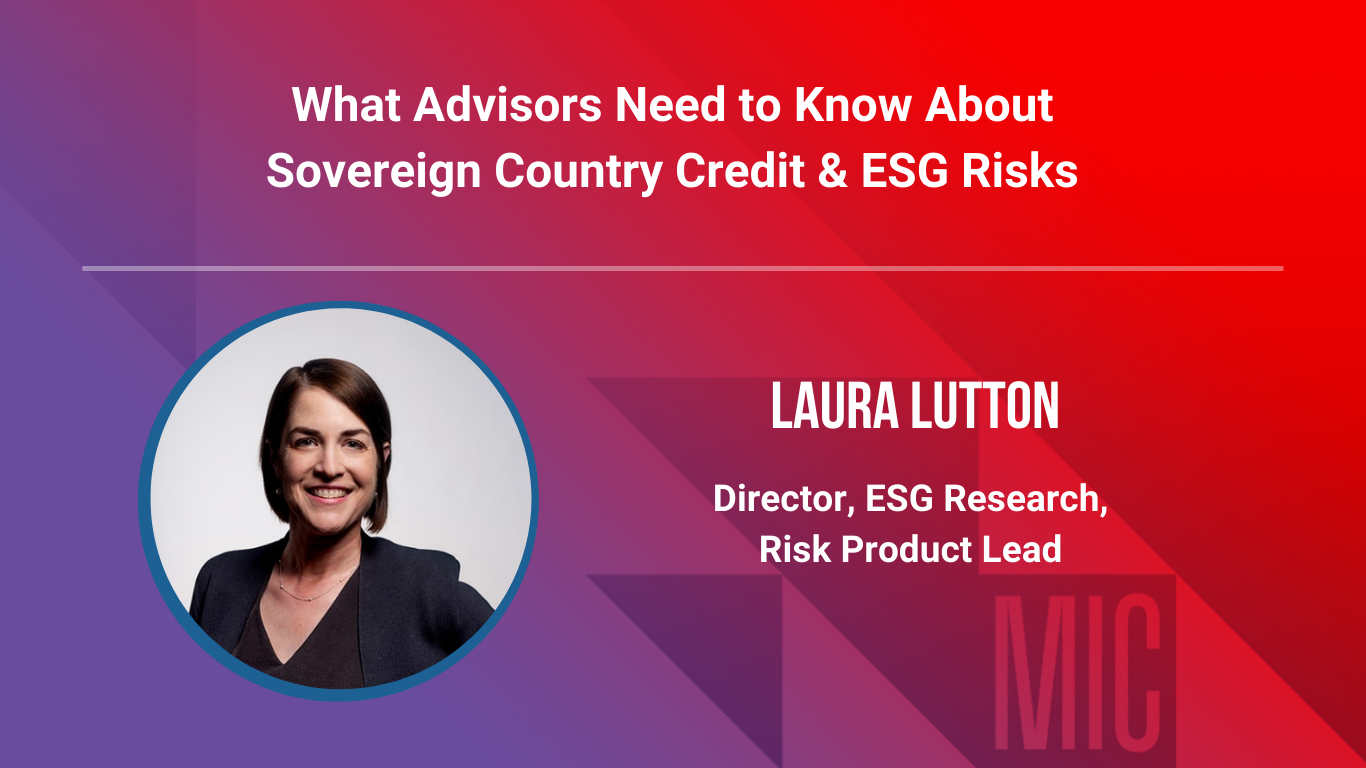#InvestInOurPlanet
Earth Week is an opportunity to reflect on environmental strategies and the changes needed to ensure a sustainable future.
Investors and companies around the world are partnering with Sustainalytics to drive change that can have positive ESG impacts on their investment strategy and align with their values—while striving to make change for good.
Leading up to Earth Day on April 22, Sustainalytics’ global network of analysts and thought leaders share their insights through recent reports, videos, articles, research snapshots and more.
Taking on meaningful action for Earth Day involves diverse perspectives, adaptability, and collaboration. Learn more about how investors and companies are leveraging ESG considerations for their objectives.
Investor Insights
Events
Morningstar Investment Conference 2022
Chicago | Virtual | May 16 - 18, 2022 | View the Agenda
ESG Spotlight: Featured Speakers from Sustainalytics
.png?sfvrsn=8ae97d00_1)



Corporate Sustainability
Second-Party Opinion - Green Bonds, Social Bonds, Sustainability Bonds
Issuers looking to support their sustainability strategy through sustainable finance solutions have several options, from sources of debt to equity instruments. These solutions include Green Loans, Sustainability Linked Loans, Green Bonds, Sustainable Bonds and more.
When issuing bonds, issuers can self-label them as green, social or sustainable. The label depends on the types of projects being financed by the proceeds (i.e., the “use of proceeds”). For example, bonds with proceeds used exclusively to finance or re-finance green projects in renewable energy, can be labeled as green.
At a minimum, issuers can provide details to investors on the green eligibility criteria for the use of proceeds, as specified in the issuer’s green bond framework. However, it is recommended that an assessment of the green bond framework is performed by an independent third party. The assessment carefully analyzes the “greenness” of the eligible projects or assets mentioned in the framework. This assessment is also known as a “Second-Party Opinion” or “External Verification”.
A Second-Party Opinion by a trusted and a respected evaluation firm, provides a clear assessment of the issuer’s green bond framework or sustainability bond framework (See examples on 250+ Second-Party Opinions). A second-party opinion strengthens the credibility of the bond and helps gain the confidence of investors looking to invest in a green bond.

Issuing a Green Bonds is not a complex process but follows the same process as any other conventional bond. Learn more about the Steps to Issue a Green Bond.
ESG Risk Ratings and Material ESG Issues
ESG Stewardship
Discover how environmental risks can be managed systemically in your ESG stewardship strategy with Engagement 360.
Green Business
Measuring What Matters: Initiatives for Banks' Climate-Related Impact and Disclosure
To help financial institutions examining the climate impact of their portfolios, we’ve compiled a list of the initiatives and organizations offering guidance on the collection, measurement, and disclosure of climate-related financial data.
Related Products

ESG Risk Ratings
Take a coherent and consistent approach to assessing financially material ESG risks.
Learn More
Impact Solutions
Manage and report on the social and environmental impact of your portfolio
Learn More
Material Risk Engagement
A proactive engagement with companies with the greatest unmanaged financially-material ESG risks.
Learn MoreMorningstar Sustainability Insights for Advisors and Wealth Managers
Connect with us to discover Sustainalytics' ESG Solutions
Investor Opportunities
Our core research and ratings solutions have enabled the world’s leading institutional investors to identify, understand, and manage ESG-driven risks and opportunities. As a part of Morningstar, we continue to accelerate our efforts to bring meaningful ESG insights to investors of all types across different asset classes at the company and fund level.
Corporate Opportunities
Sustainalytics’ Corporate Solutions unit works with hundreds of companies and their financial intermediaries to help them consider sustainability in policies, practices, and capital projects.




